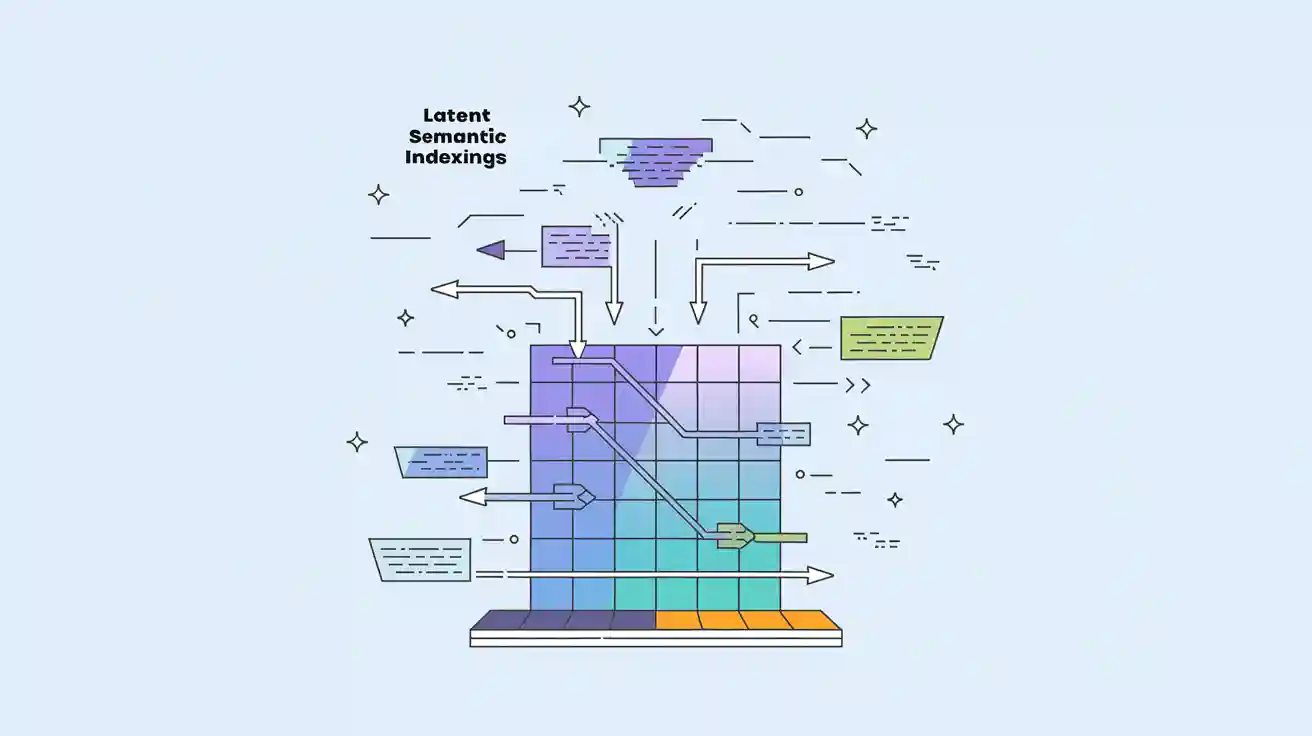What is Latent Semantic Indexing (LSI)? Definition, Principles & SEO Applications
Discover what Latent Semantic Indexing (LSI) is, how it works, and its role in SEO and AI search optimization. Learn the core principles, key components, real-world applications, and how LSI compares to modern NLP techniques like BERT and word embeddings. Ideal for marketers, SEO experts, and brands seeking to boost content relevance and visibility.


One-Sentence Definition
Latent Semantic Indexing (LSI) is a mathematical technique that analyzes relationships between words and documents by uncovering hidden (latent) semantic structures using singular value decomposition (SVD), enabling more accurate information retrieval and content relevance.
Detailed Explanation
LSI was developed in the late 1980s as a breakthrough in natural language processing and information retrieval. Unlike traditional keyword matching, LSI identifies patterns in how words co-occur across documents, allowing it to group semantically related terms—even if they don’t appear together explicitly. This is achieved by transforming the original high-dimensional term-document matrix into a lower-dimensional semantic space, where both words and documents are represented as vectors. In this space, documents with similar topics and words with similar meanings are positioned closer together, making it easier to retrieve relevant information and handle synonyms or ambiguous terms.
For example, LSI can recognize that “car” and “automobile” are contextually related, improving search results even if a query uses only one of these terms. This semantic understanding is foundational for modern search engines and content optimization strategies (Stanford NLP, Mailchimp).
Key Components of LSI
- Term-Document Matrix: A table where each row represents a word and each column represents a document, with cell values indicating word frequency.
- Singular Value Decomposition (SVD): A mathematical process that decomposes the term-document matrix into three matrices (U, Σ, V), reducing dimensionality and revealing latent semantic relationships.
- Semantic Space: The lower-dimensional space where both terms and documents are mapped as vectors, allowing for clustering and similarity measurement based on conceptual meaning rather than exact keywords.
Real-World Applications
- SEO and Content Optimization: LSI helps search engines and content platforms understand the true context of a page, improving relevance and ranking for a broader set of queries. For instance, using semantically related terms (not just synonyms) in your content can enhance topical authority and visibility (Mailchimp).
- Brand Visibility in AI Search: Platforms like Geneo leverage LSI-inspired semantic analysis to provide actionable content optimization suggestions, helping brands increase their visibility in AI-driven search engines such as Google AI Overview and ChatGPT. By analyzing which semantic clusters are underrepresented, Geneo can recommend related terms and topics to strengthen a brand’s presence across multiple search platforms.
- Document Clustering and Recommendation: LSI is used in academic search engines, recommender systems, and spam filtering to group similar documents and match user queries with relevant content, even when vocabulary differs.
Related Concepts
- TF-IDF: A simpler method that scores words based on their frequency in a document versus the entire corpus, but lacks the semantic depth of LSI.
- Topic Modeling (e.g., LDA): Identifies abstract topics within documents, often used alongside or as an evolution of LSI.
- Word Embedding & BERT: Modern deep learning techniques (like Word2Vec, GloVe, and BERT) provide richer, context-aware semantic representations, surpassing LSI in handling complex language tasks. However, LSI remains foundational for understanding the evolution of semantic search.
- Semantic Search: The broader field of search technologies that focus on meaning and intent, not just keyword matching.
Common Misconceptions
While LSI is often mentioned in SEO circles, it’s important to note that Google does not use LSI or “LSI keywords” as a direct ranking factor (Search Engine Journal). Instead, the value lies in the underlying principle: creating content that thoroughly covers a topic with semantically related terms naturally improves relevance and user experience.
Visualizing LSI
A typical LSI workflow involves:
- Building a term-document matrix from your content.
- Applying SVD to reduce dimensionality.
- Mapping terms and documents into a semantic space.
- Measuring similarity and clustering based on conceptual meaning.

Conclusion & Next Steps
Latent Semantic Indexing remains a cornerstone in the evolution of semantic search and content optimization. For brands and marketers, the key takeaway is to focus on comprehensive, semantically rich content that addresses user intent from multiple angles. Tools like Geneo can help you analyze and optimize your content for maximum visibility in the age of AI-driven search.
Ready to boost your brand’s AI search visibility? Try Geneo today and unlock actionable insights for smarter content optimization.





